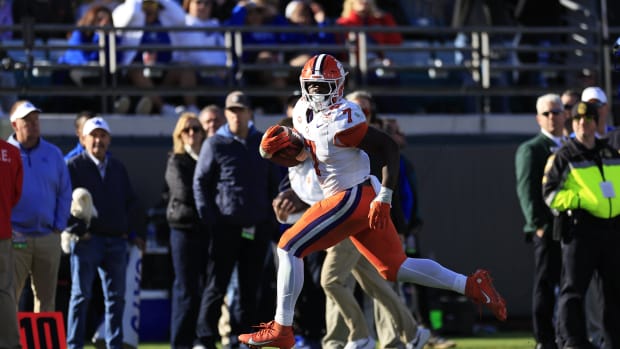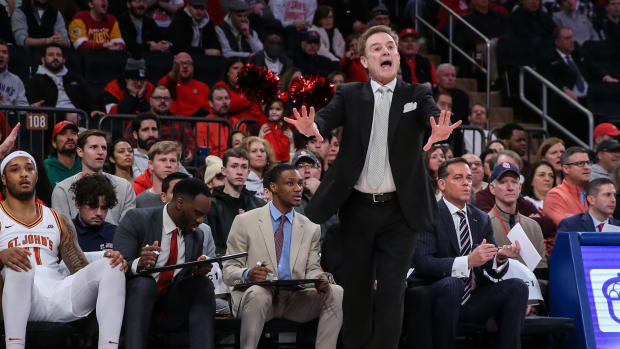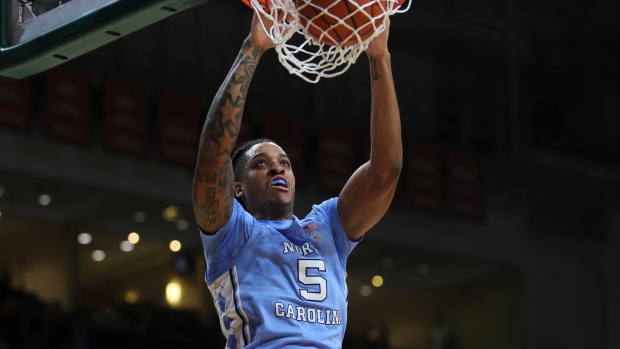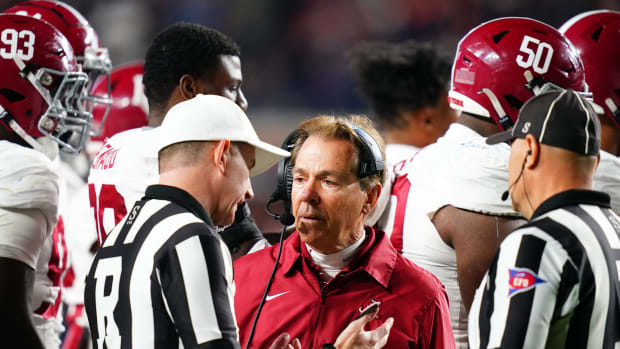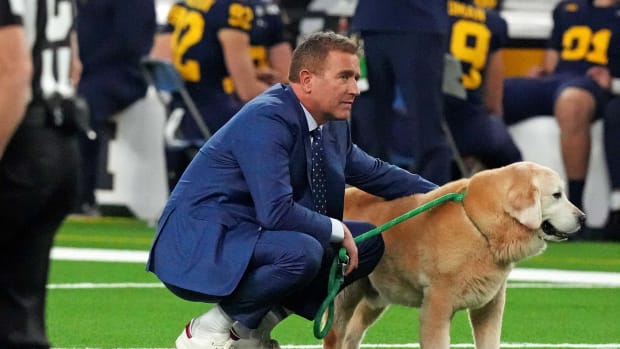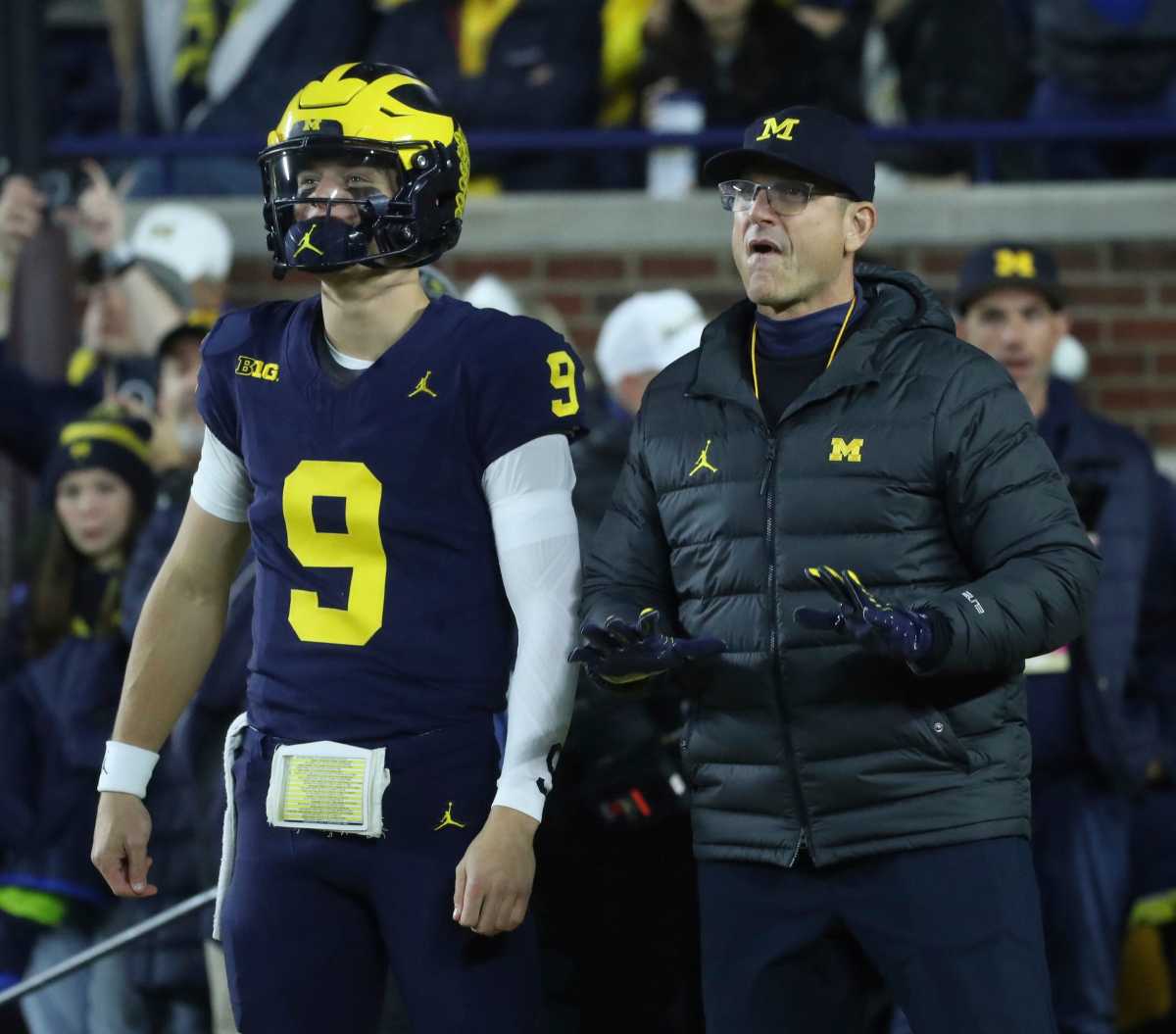
Harbaugh Pushes for Student-Athletes Revenue Sharing
It is rare to go a day without seeing No. 2-ranked Michigan football and head coach Jim Harbaugh in national headlines. The country has become infatuated with former Wolverine analyst Connor Stallion’s sign-stealing enterprise and the subsequent NCAA and Big Ten investigation ripping through Ann Arbor.
While not at the center of the probe, Harbaugh has just finished serving a three-game suspension handed down from the Big Ten for infringements of the conference’s sportsmanship policy concerning the sign-stealing scandal. The head coach pursued litigation against the conference regarding the penalty but shortly thereafter settled and accepted the conference’s punishment.
This Saturday, Harbaugh will make his highly anticipated return to the sidelines for Michigan’s Big Ten Championship game against the University of Iowa. Throughout this fiasco, Harbaugh has been notoriously cryptic –– as one who is part of an ongoing investigation should be.
Since mid-October, all eyes have been on Harbaugh; utilizing this heightened national attention, the head coach spoke out on something completely unrelated to the current drama circling his program – athlete compensation. Harbaugh, through his tenure, has been a zealous athlete advocate and prominent supporter of NIL.
This Sunday, during a press conference for the Big Ten Championship, Harbaugh pushed for increased compensation for student-athletes beyond what NIL provides:
“Who could be against the players being compensated for what they do? At least even minimum wage. Who could argue against that?” stated Harbaugh. In addition, the head coach stated that he would take less salary to promote revenue-sharing efforts for his athletes on the field. Harbaugh will make between $7,000,000 and $10,000,000 this year. His players will receive no direct compensation from the university.
Harbaugh understands the realities of college athletics have shifted since he took the field.
In 1982 – one year before Harbaugh’s freshman year and two years before a landmark antitrust ruling gave conferences the right to negotiate media deals – the NCAA paid the University of Michigan roughly $130,000 for their broadcasting rights. In 2018, Michigan’s TV rights revenue grew by 392% to $51,000,000. As a result of the latest Big Ten media deal set to commence next season, member schools are estimated to net nearly $100,000,000 annually from TV broadcasts.
Various factors have accounted for the substantial spike in sports media rights valuations. The rise of streaming has made sports one of the last live-broadcast options. With most other media consumption moving to on-demand platforms, sports necessitate live broadcasting. In 2022, out of the 100 most viewed live broadcasts, 94 were sporting events.
On-demand, subscription-based streaming platforms lack the robust advertising potential that live broadcasts can provide. Every media timeout in a sporting event boasts massive revenue potential for the networks that air games. As streaming becomes more and more prominent, sports become more and more valuable.
Harbaugh utilized last week’s rivalry game between Michigan and Ohio State to further his point:
“There wasn’t a commercial that went by, a sporting event that was played all week that you didn’t see those two teams and the buildup and the hype and talk about players’ legacies and everything that could possibly be rolled into one game on the line. Then you see the amount of people that are benefiting financially from those players’ efforts out there. I wonder who could be against [player payment].”
Technological shifts have changed the economics of college sports. With minimal media payments seen before contemporary lucrative media deals, the value of a scholarship seemed more fitting to the value athletes brought to a university. In the present system, the immense revenue made from the “hype” of the players feels exploitative.
Universities must find ways to spend their new revenue without a revenue-sharing regime. Without traditional ownership structures like pro sports, collegiate athletic departments do not try to end their academic years with profit. Instead, these excess funds go to bloated athletic departments, high coaches’ salaries, and needlessly ornate athletic facilities. Harbaugh wants to change this paradigm.
According to Harbaugh, NIL is not enough; the money must come from those directly profiting off the student-athletes. The most flagrant of these profiteers are the universities, which have shown themselves, as a byproduct of the system NCAA rules have created, to not act as rational economic actors.
While Harbaugh sees the system for how it is, he knows he is a vocal minority amongst his peers: “I’ve had people tell me, ‘Don’t say anything about that, that’ll take away money for the coaches. I would take less money for the players to have a share.”
The head coach is no stranger to being a polarizing figure. Utilizing his increased notoriety for the benefit of his athletes and those at institutions across the NCAA is a noble pursuit. However, how many coaches and administrators will align with Harbaugh's selfless ideology remains to be seen.

